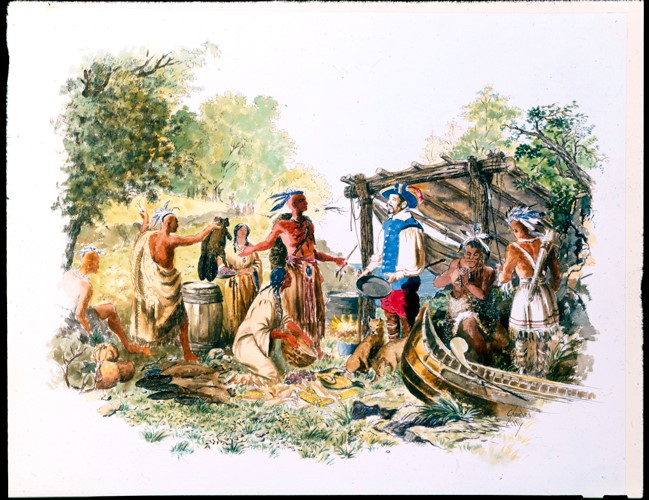Amplifying Underrepresented Stories: Juan Rodriguez

Depiction of Juan Rodriguez interacting with local Indigenous people, painting by Charles Lilly, c. 2012. Charles Lilly Art and Artifacts Division, New York Public Library, Schomburg Center for Research in Black Culture.
Juan Rodriguez, of African and Portuguese descent, is considered to be the first documented non-native inhabitant to live on Manhattan Island.
Described as a “dark-skinned free man” from the Spanish colony of La Española (today the Dominican Republic and the Republic of Haiti), he arrived in the Hudson Harbor in 1613 on board a Dutch ship and stayed there until at least 1614. Although the details are hazy, Rodriguez was left alone to determine trade relations with the local Munsee Lunaape
According to all indications in the available historical records, Juan Rodriguez participated very actively in the first interactions between the earliest Dutch explorers of the Hudson and the local Native Americans, and therefore, has gone into the historical record as the first person of non-Native ancestry to have ever resided for a substantial length of time in the area.
The story of Juan Rodriguez disappeared into near-oblivion in American historical scholarship until the 1990s, when scholars interested in the early history of New York’s African Americans became aware of him and began to highlight his historical importance as the earliest recorded settler and a precursor of the presence of African Americans in the city and the state of New York.
More can be read about Rodriguez thanks to the The City University of New York Dominican Studies Institute (CUNY DSI) at The City College of New York.
Stevens-Acevedo, Anthony, Tom Weterings, Leonor Alvarez Francés. "Juan Rodriguez and the Beginnings of New York City," CUNY Dominican Studies Institute (2013).